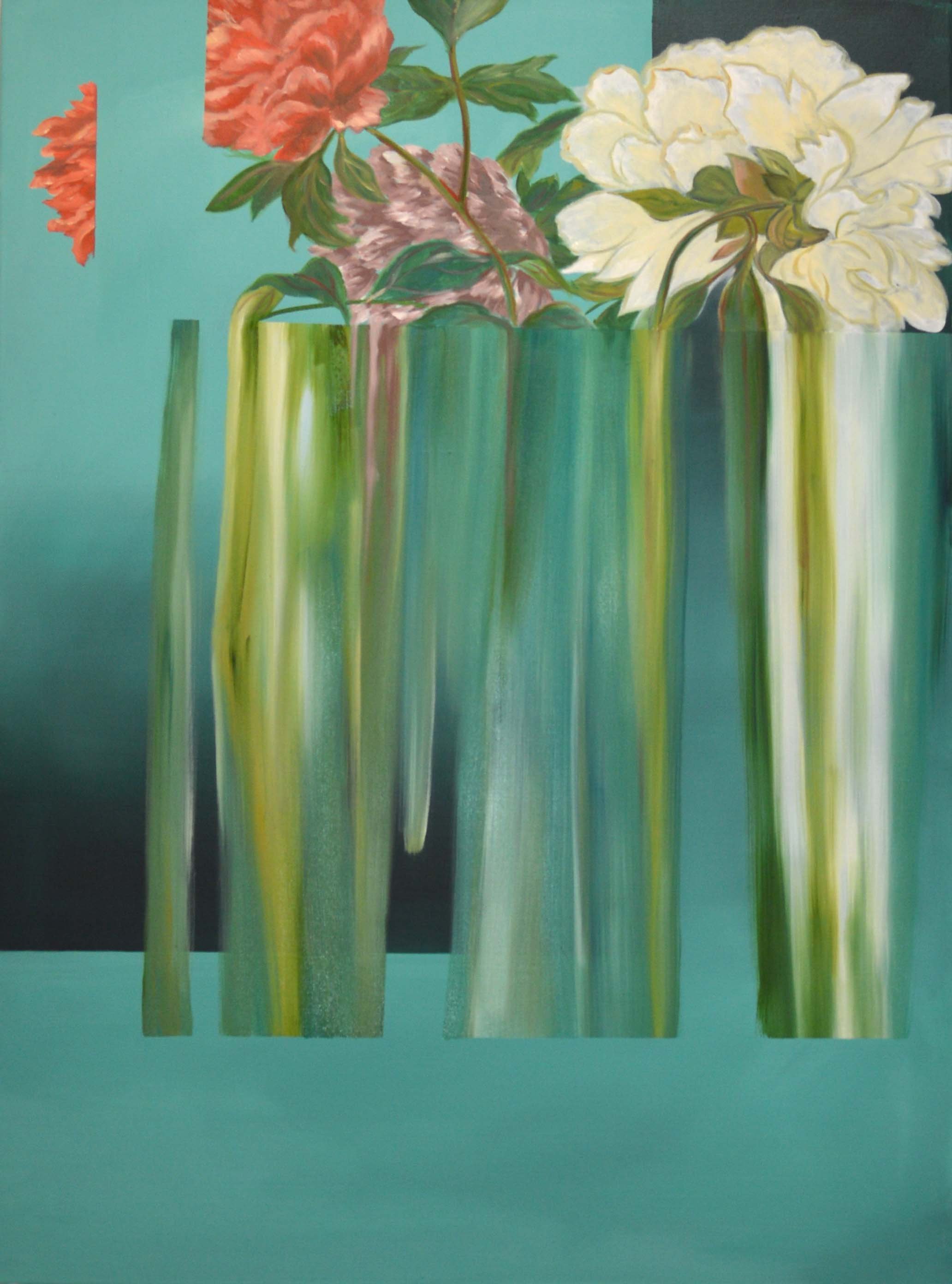
Migratory Changes
My practice has long been concerned with the act of reproduction—copying, re-tracing, commodifying, and forging. These processes mirror Lan’s investigation of diasporic iconography from my childhood homes in tandem with the globalized desires that drive their replication. My use of oil painting on canvas follows this pattern, by intentionally displacing the original silk-based ink artwork through a shift in materiality.
During the most isolating periods of the pandemic, the only ways that I could see new artwork was through the last books they borrowed from the library and the Internet. Cellphone photos of my parents and grandparents living rooms were some of the only reminders of home, where the first references for the Migratory Changes series hung. While browsing the Metropolitan Museum of Art’s online collection, I noticed a significant part of the Asian Art Collection had unidentified artists. One of the most prominent pieces on the website is titled The Garden Estate, which bears a fake signature from Liu Songnian. The Met speculates that this seventeenth century forgery of a twelfth century artist was made “to satisfy market demand for old paintings.” Sandwiched between discourses of cultural authenticity and unspoken stories of the generational violence underlying migration, the digital distortion echoes the images’ difficult journey, rendered even less legible through the decontextualization that happens when entering Western museum collections.
A solo exhibition at Zalucky Contemporary featured the most recent parts of the series, titled 'Which Came First, the Home or the Stranger?' and received a review in Frieze Magazine.
The exhibition received support from the Artist-Direct Grant by Partners in Arts (PIA) in 2024.

After After Shen Quan
oil on canvas, 40" x 30", 2024

After Xia Gui
oil on canvas, 40" x 30", 2024

Wooden frame of spruce and plywood with canvas. Installation view of 'Which Came First, The Home or the Stranger?' at Zalucky Contemporary, 2024.

installation view of 'Which Came First, The Home or the Stranger?' at Zalucky Contemporary, 2024

Orchiderlirium
chiffon, canvas, linen, polyester fill, copper wire, 2024.

Lucky / Empty Echo
Chiffon, canvas, and polyester fill, 45" x 30", 2024

Temporarily removed ii
oil on canvas, 20" x 16", 2018-2024

After Yun Bing
Oil on canvas, 30" x 40", 2024

After Shen Quan
oil on canvas, 24" x 18", 2024

Temporarily Removed
oil on canvas, 14" x 18", 2018-2024

A Legacy of Botany iii
oil on canvas, 18" x 24", 2024

A Legacy of Botany
oil on canvas, 18" x 24", 2023

After Liu Songnian
oil on canvas
36” x 72”
2023
The reference for this painting is credited to Liu Songnian, but was discovered to be a 17th century forgery of a 13th century scroll painting.

After Wu Long
oil on canvas
36” x 24”
2023

After Liu Songnian ii
Oil on canvas
30” x 40”
2023

Migratory Changes II
oil on canvas, 40” x 30”, 2021

Migratory Changes
oil on canvas, 40” x 30”, 2020.

Pictures of Toisan
oil on canvas, 40” x 30”, 2021

Migratory Changes VII
Oil on canvas, 40” x 30”, 2023

installation view at Bradley Ertaskiran , photo by Paul Litherland

Migratory Changes VI
oil on canvas, 40” x 30”, 2021
Photo by Paul Litherland

installation view at Bradley Ertaskiran , photo by Paul Litherland

installation view at Bradley Ertaskiran , photo by Paul Litherland

installation view at Bradley Ertaskiran , photo by Paul Litherland

Migratory Changes V
oil on canvas, 40” x 30”, 2021
photo by Paul Litherland

Migratory Changes IV
oil on canvas, 40” x 30”, 2021.

Migratory Changes III
oil on canvas, 40” x 30”, 2021.




























